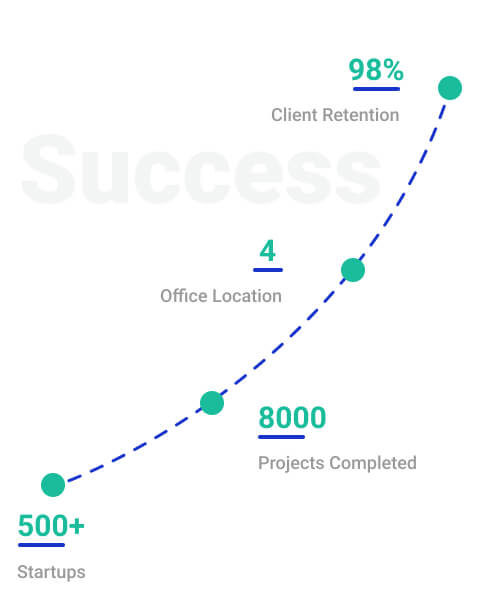The taxpayer must follow specific steps and submit documents and declaration if required to GST authorities for claiming GST refund. The goods and services tax refunds can be for the excess money balance deposited in the electronic cash ledger or the Tax paid by error or the accumulated ITC which couldn't be utilised for Tax payments due to zero-rated sales or inverted Tax structure.
How a GST refund is claimed depends upon the kind of refund claimed. As an example, only reporting details in the GSTR-1 and GSTR-3B can claim the IGST refund in exports (with tax payment). However, cash paid in excess of the electronic cash ledger may be refunded under form RFD 01. As such, the process or the steps differs with the refund type.
GST Refund - What is it?
Refund under GST is a procedure where registered taxpayers claim excess amount if they paid much more than the GST liability. They could claim through the GST portal by submitting a refund application with the required details.
Manufacturers and exporters' cash flow and working capital requirements might suffer due to a delayed refund. Consequently, part of the intention of GST would be making refunding simpler so manufacturers and exporters do not suffer from delays. Making the refund process quick enhances tax administration.
The GST regime has provisions concerning refunds and aims to standardise procedures regarding refunds under GST. Consequently, a standardised form for refund claims was created. The claim procedure may be completed online on time.
What is GST Return?
A goods and service tax return gives information concerning the financial transactions of a GST-registered individual.
Purpose:
- GST return records every revenue / product sales & expense / purchase made by a GST registered entity.
- Under GST filing of return helps tax authorities determine the taxpayer's net tax liability.
Components:
A return under GST comprises the following things:
- Purchases: Details of taxpayer purchases during the specified period.
- Sales: Details of sales transactions from the taxpayer during the specified timeframe.
- Output GST (On sales): The GST levied upon the sales by The taxpayer.
- Input Tax Credit (GST paid on purchases): Information on GST paid out on purchases (credit against output tax liability).
Filing Requirements:
- Registered dealers under GST must file GST annual returns regularly as per the prescribed schedule.
- The type and frequency of returns being filed can depend upon turnover, business nature and registration type.
Compliance:
- To timely and accurately file GST return online is an essential for GST regulations.
- Failure to file returns within the allowed timeframe could be punished and legal action taken.
Understanding the GST Refund Procedure
To facilitate refunds under gst, tax authorities have introduced an online system for claiming refunds. This enables taxpayers to recover excess payments more easily and rapidly. The process is broken down into Online Claim Submission.
Now taxpayers can submit refund claims through their registered GST accounts on the appropriate online platform. This modernised approach removes the need for manual submissions for refund requests.
When to Claim Goods and Services Tax Refund?
Application for Goods and services tax rebate has to be submitted within 2 years from the appropriate date. What constitutes a 'relevant date' varies between the instances of refunds. The following are dates for common cases of refund under gst.
|
Instance of GST Refund
|
Relevant Date
|
|
Goods exported by air or sea
|
Date of departure from India
|
|
Goods exported by land
|
Date of crossing the border
|
|
Goods exported by post
|
Date of dispatch by the post office
|
|
Deemed exports
|
Date of filing the return under gst
|
|
Exported services with payment received later
|
Date of payment received
|
|
Exported services with pre-payment
|
Date of invoice issuance
|
|
Tax refund due to legal order
|
Date of communication of order
|
|
Unutilised Input Tax Credit
|
Last day of the financial year of refund claim
|
|
Provisional GST payment refund
|
Date of final tax adjustment
|
Timeline for Claiming Refunds
Taxpayers have to respect certain timelines when claiming GST refunds. The relevant date for your claim depends upon the refund type:
- Excess Payment of GST: In case you need a refund as you are overpaid GST, the date of payment is the relevant date on your claim.
- Export or Deemed Export of Goods and Services: For refunds on export or deemed export of services or goods the relevant date is the date of despatch, loading or passing the frontier.
- Input Tax Credit (ITC) Accumulation: where ITC has accrued because of tax-exempt or nil output, the relevant date is the very last day of the financial year to which the Credit applies.
- Excess Payment on Finalisation of Provisional Assessment: In case you made excess payments based on the finalisation of provisional assessments, the day the tax is adjusted is the appropriate date on your refund claim.
Eligibility for GST Claim Refund
The GST refund procedure involves many scenarios where taxpayers can claim refunds. When you can submit a GST refund claim:
- Excess Tax Payment: Errors or omissions that cause an overpayment of tax might be claimed as refunds.
- Dealer & Deemed Export Goods or Services: Taxes paid on goods or services for dealer and regarded as export can be sought refunds.
- Buys by UN Bodies or Embassies: UN bodies or embassies can get refunds of GST paid out on purchases inside the country.
- ITC Accumulation because of Tax-Exempt or Nil-Rated Output: Refundable accumulated Input Tax Credit (ITC) from nil-rated or tax-exempt output is offered as accumulated Input Tax Credit.
- Provisional Assessment Finalisation: Adjustments made after provisional assessments are finalised could be claimed as refunds.
- Refunds of Taxes for International Tourists: Overseas visitors going to the nation can get a refund on tax paid on items bought during their stay.
Documents for GST Refund Claim
Have the following documents prepared when claiming a GST claim for refund:
- Invoice: Provide the initial invoice or perhaps even a copy of the transaction that the refund is sought. This document proves the taxable supply.
- Shipping Bill/Bill of Export: Include the original shipping bill, bill of export, or airway bill for exported merchandise, as necessary. These documents help support the export of goods and tax refund eligibility.
- Bank Realisation Certificate (BRC): Send the original bank Realisation Certificate (BRC) issued by the Bank or proof of payment in foreign currencies. This certificate proves that payment was received for exported items in a different currency.
- GST RFD-01A Form: Fill out and self-attest GST RFD-01A refund application form. This form is needed to begin the refund and also give specifics of the refund claim.
- Further Documents: Include other documents which the GST authorities request to back your refund claim. They could include a purchase order, payment receipt or other necessary documents.
Make sure the completeness and accuracy of these documents to help the refund process and stay away from delays or complications in claiming your entitled refunds.
Steps to Submit a GST Refund Form
To start submitting a refund pre-application form, follow the following steps :
1. Log into the GST Portal:
Access the GST portal with your registered credentials.
2. Go to "Refunds":
When logged in, click the "Refunds" tab in the portal dashboard.
3. Select "Pre-application":
Under the "Refunds" tab, choose "Pre-application" to start the refund pre-application.
4. Fill Out the Pre Application Form:
Complete the pre-application form along with necessary information. Include your GST Identification Number (GSTIN), select the type of refund, indicate the tax year and also the appropriate amount of refund.
5. Attach Supporting Documents:
Upload supporting documents to confirm your refund claim (invoices, purchase receipts, along with any other proof that the authorities require).
6. Review & Verify:
Review all info entered into the application form.
6. Send the Form:
After you verify the details, submit the pre-application form electronically via the GST portal.
7. Acknowledgments and ARN:
Following submission, you are going to get an acknowledgment that your pre-application form was received. This acknowledgment will contain a unique Application reference Number for future Reference and tracking purposes.
8. Verification & Processing:
GST authorities will examine the submitted pre-application form and supporting documents. In the event things are in order, your refund claim is going to be further processed.
Observing these steps and also entering the proper info is able to help you submit your refund pre-application form and speed up your refund claim.
How to Apply for Different Types of GST Refunds Using Form RFD 01
For various kinds of refunds under gst which make use of Form RFD-01, follow these steps:
1. Log into the GST Portal:
Log into the GST portal with your credentials.
2. Go to "Refunds":
Head over to the GST portal's Refunds tab from the dashboard.
3. Select "Application for Refund" (Form RFD-01):
Select Application for Refund (Form RFD 01) from the dropdown menu beneath the "Refunds" tab.
4. Fill Out the Form:
Complete Form RFD-01 with the needed information including :
- GSTIN of applicant.
- Legal name of registered person.
- Address of applicant.
- Tax period for which the refund is being claimed - Grounds of refund (choose the appropriate category, such as exports, inverted duty structure, etc.)
5. Attach Supporting Documents:
Upload supporting documents for the refund type you claim. Examples include:
- Export refunds: Shipping bills / export invoices etcetera.
- Inverted duty structure refunds: Invoices with input / output tax details, etc.
6. Verify Information & Documents:
Review the information entered in the form and include some supporting documentation.
7. Electronically Sign the Form:
By the proper way (Digital Signature Certificate (DSC) or Electronic Verification Code (EVC)), sign the Form RFD 01.
8. Send the Form:
Submit the form electronically via the GST portal.
9. Acknowledgments & ARN:
Once submission is successful, you are going to receive an acknowledgment confirming receipt of your refund application. This acknowledgment will include a unique Application reference Number for future Reference.
10. Refund Application Processing:
The tax authority will process your refund request in that time and make the decision for you.
How To Calculate GST Refund
Your refund under GST is merely a matter of subtracting the extra amount paid out of your total dues. Learn how to obtain your refund with these steps:
1. Determine Excess Payment:
Find the amount of GST paid versus the amount you were meant to spend according to your transactions.
2. Calculate Excess Amount:
Divide the amount you owe by what you really paid by the overall dues you are meant to pay. This will tell you the additional amount you paid or were charged.
3. Refund Claim:
After you have computed the excess amount, you can get a refund within the appropriate refund processing timeline on your case.
4. Use Tools for Accuracy:
Use tools including the GST calculator that will help you compute the refund amount effectively.
5. Refund Application Process:
Online file your refund application through the portal. Give details and add documents to support your claim.
6. Acknowledgment/Verification:
In case your application is successfully verified, you'll receive Form RFD-02 acknowledgment upon submission. In case any discrepancies are discovered, you'll receive Form RFD 03 for additional explanation.
6. Timely Processing:
The present refund process is organised and efficient because of the online process. Refunds usually are processed within thirty days of application.
7. Ensure Accuracy & Compliance:
Be sure the details in your refund application are accurate to avoid extra rounds of scrutiny and audit. Send in your application by the deadline to expedite refunds.
Following these tips and also being correct in your refund application will make sure you get your refund in the prescribed timeframe in your bank account.
Post-Application for Refund under GST
Once a refund request is submitted, tax authorities process the application and also refund the cash. What takes place next after the refund application is applied:
1. Verification & Scrutiny:
- The tax officer or refund processing officer looks over the refund application.
- Documents attached to the application are reviewed.
2. Application Tracking:
- The applicant may track The status of their filed Application through track application status under Refunds.
3. Officer's Actions:
The officer might take various actions depending on the application:
|
Form/Action
|
Description
|
|
Provisional refund (Form RFD 04)
|
Up to 90% of the refund can be provisionally refunded within 7 days of acknowledgment date.
|
|
Acknowledgment (Form RFD 02)
|
Successful refund requests receive an acknowledgment within fifteen days of submission.
|
|
Withdrawal option (Form RFD 01W)
|
Refund application withdrawal is possible through Form RFD-01W. Refund amounts debited are credited back to the ledger.
|
|
Deficiency memo (Form RFD 03)
|
If deficiencies are found, Form RFD 03 is issued, and a new application must be submitted after rectification.
|
|
Notice for clarification (Form RFD 08)
|
A notice for clarification (Form RFD 08) is issued in case of application rejection or incorrect refund. Reply within fifteen days using Form RFD-09.
|
|
Sanction or rejection order (Form RFD 06)
|
A sanction or rejection order is issued on Form RFD 06. A payment order (Form RFD-05) follows if sanctioned.
|
|
Order for withholding refund (Form RFD 07, Part-B)
|
Occasionally, an order withholding a sanctioned refund is issued. Form RFD-05 is not issued in these cases.
|
|
Re-Credit Order (Form PMT 03)
|
Re-credit orders for rejected or provisionally refunded amounts are issued from the taxpayer's electronic cash or credit ledger.
|
Provisional refund (Form RFD 04): For some Refund types, a provisional refund can be made up to 90% within 7 days of the acknowledgment date.
Acknowledgment (Form RFD 02): If the request is successful in all respects, an acknowledgement in Form RFD 02 is given within fifteen days of the refund application being submitted.
Withdrawal option (Form RFD 01W): the requesting party can withdraw The refund application through Form RFD-01W. Refund amounts debited at time of application filing will be credited back to that ledger.
Deficiency memo (Form RFD 03): If deficiencies are discovered in the application, a deficiency Memo in Form RFD 03 can be given within the very same time limit. A new application must be submitted following rectification.
Notice for clarification (Form RFD 08): A notice to seek Clarification In Form RFD 08 may be issued In the event of application rejection or refund granted by error. The applicant should reply by fifteen days using Form RFD-09.
Sanction or rejection order (Form RFD 06): An officer passes a sanction or rejection order on Form RFD 06. A payment order in Form RFD-05 may then be issued if sanctioned.
Order for withholding refund (Form RFD 07, Part-B): Occasionally the officer will issue an order Withholding a sanctioned Refund. For those cases, Form RFD-05 is not issued.
Re-Credit Order (Form PMT 03): Orders to re-credit the refund from the taxpayer's electronic cash or credit ledger are issued in cases of rejection or in cases of provisional refunds.
4. Refund Disbursement:
Once all needed steps are complete and the refund is sanctioned, the refund is applied on the applicant's bank account.
Why Choose StartupFino for GST Refund Services?
Choose StartupFino for refund solutions under GST including GST refund for export and inverted duty structure refund. From filing the application to following its progress, our experts take care of everything for you. With StartupFino, you know your refund will be processed swiftly and correctly.
We work to your satisfaction and obtain your refund as fast as you possibly can. And we make it easy to monitor your refunds from anywhere. Save time & effort & select StartupFino for your refund requirements under GST.
FAQs
Only a GST - registered person who uses the purchased goods or services for business purposes can claim input tax credit. The individual also should have a valid tax invoice or debit note, receive the goods or services, pay the tax to the government and file the goods and service tax return within the stipulated time limit.
For refunds exceeding Rs two lakhs, a certification of Cost Accountant or Chartered Accountant is required with the refund steps.
RFD-01 is an application for online refunds under GST. It is to be e-filed on the GST portal for refund of: Taxes, cess and interest paid in case of zero-rated supplies (except for tax paid export of goods). Balance of excess cash paid into electronic money ledger.
GST regulation demands that each request for refund be submitted within 2 years from the appropriate date.
Amount of GST rebate is the excess tax you paid and isn't income. So it isn't taxed. But, interest received over the income tax refund is considered earnings and subject to income tax under the appropriate tax slab.
You can claim your refund by filing an online application of form GST RFD 01 within two years of the appropriate date with the required documents and declaration.
You receive a GST refund if you paid excess tax, exported goods or services, made zero-rated supplies, claimed lower earnings compared to presumptive income, and used input tax credit.
The new refund formula uses the net input tax credit (ITC) approach. It calculates the refund amount as net ITC plus turnover of zero-rated supplies x adjusted total turnover.
The refund process requires the GST person to process the request of refund within sixty days of the application date. In case it isn't paid in sixty days, an interest must be paid out on the delayed refund.































































